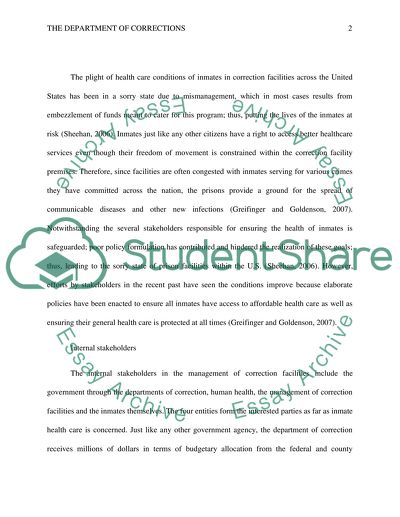Cite this document
(“Roles Different Stakeholders Play In Ensuring the Health Care of Assignment”, n.d.)
Retrieved from https://studentshare.org/sociology/1674263-the-department-of-corrections
Retrieved from https://studentshare.org/sociology/1674263-the-department-of-corrections
(Roles Different Stakeholders Play In Ensuring the Health Care of Assignment)
https://studentshare.org/sociology/1674263-the-department-of-corrections.
https://studentshare.org/sociology/1674263-the-department-of-corrections.
“Roles Different Stakeholders Play In Ensuring the Health Care of Assignment”, n.d. https://studentshare.org/sociology/1674263-the-department-of-corrections.


